7.8 /10 1 Votes
Composer(s) Paul Durand Original language(s) English Final episode date 17 October 1955 | 7.8/10 IMDb Country of origin United States First episode date 18 October 1954 | |||||||||||||||||||||||||||||||||
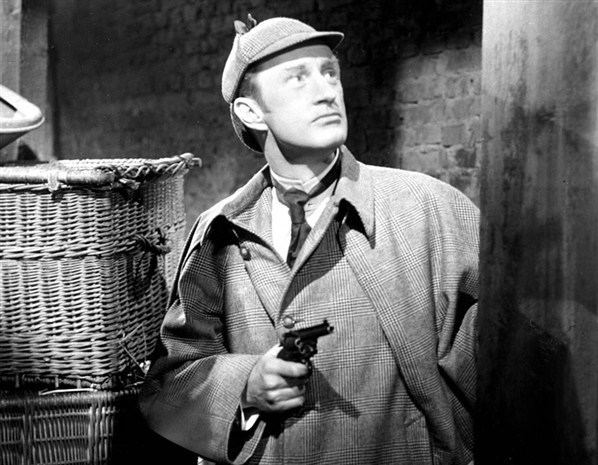 | ||||||||||||||||||||||||||||||||||
Directed by Steve PrevinSheldon ReynoldsJack Gage Starring Ronald HowardHoward Marion CrawfordArchie Duncan Cast Ronald Howard, Howard Marion‑Crawford, Archie Duncan | ||||||||||||||||||||||||||||||||||
Sherlock Holmes was a detective television series aired in syndication in the fall of 1954, based on the Sherlock Holmes stories of Arthur Conan Doyle. The 39 half-hour mostly original stories were produced by Sheldon Reynolds and filmed in France by Guild Films, starring Ronald Howard (son of Leslie Howard) as Holmes and Howard Marion Crawford as Watson. Archie Duncan appeared in many episodes as Inspector Lestrade (and in a few as other characters). Richard Larke, billed as Kenneth Richards, played Sgt. Wilkins in about fifteen episodes. The series' associate producer, Nicole Milinaire, was one of the first women to attain a senior production role in a television series.
Contents
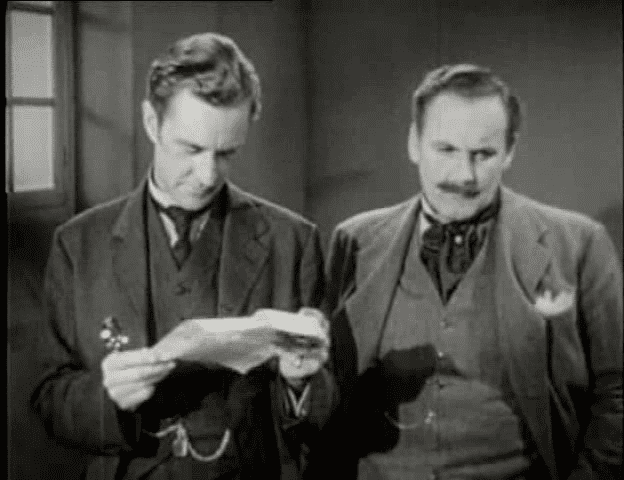
The series was the first American television adaptation of Doyle's stories, and the only such version until 2012's Elementary.
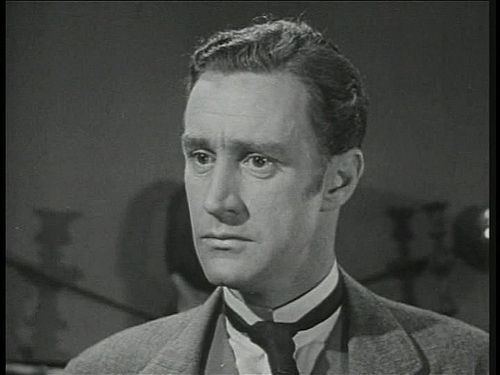
History

Sheldon Reynolds had been successful with his 1951 European-made series Foreign Intrigue (in 1956 he directed a movie with the same title starring Robert Mitchum) and decided a Sherlock Holmes series made in France for the American syndication market might also be successful.
Reynolds contacted the Doyle family and began his research into producing a Holmesian television series.
Casting
Reynolds desired to present the Holmes of A Study in Scarlet.
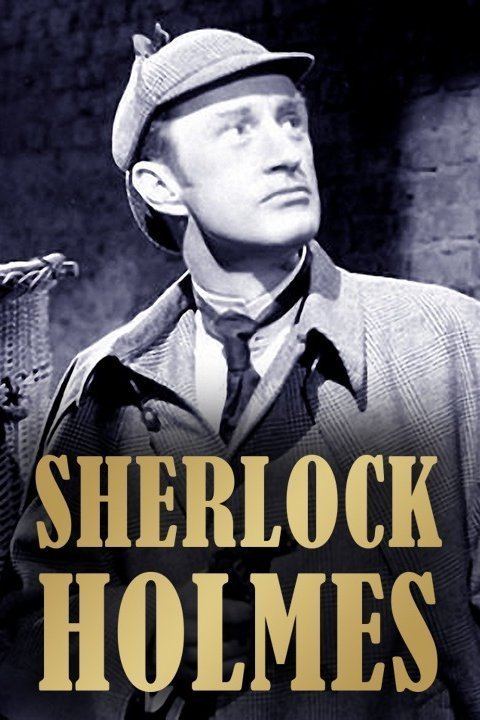
I was suddenly stuck by the difference between the character in that book and that of the stage and screen. Here, Holmes was a young man in his thirties, human, gifted, and of a philosophic and scholastic bent, but subject to fateful mistakes which stemmed from his overeagerness and lack of experience.

In early stories like that one, Conan Doyle had not yet grown tired of his character, who later became a literary monster for him. And, as literature, the earlier stories are far better. But practically every stage and screen presentation of the detective is based on the later stories.
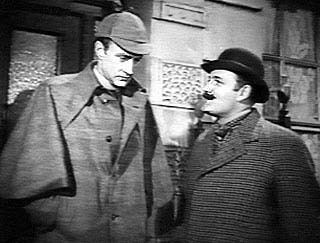
Ronald Howard, then 36, was chosen to portray Sherlock Holmes. Howard shared Reynolds's view of Holmes and his portrayal was much more laid back than the more famous version portrayed by Basil Rathbone.
In my interpretation, Holmes is not an infallible, eagle-eyed, out-of-the-ordinary personality, but an exceptionally sincere young man trying to get ahead in his profession. Where Basil Rathbone's Holmes was nervous and highly-strung, mine has a more ascetic quality, is deliberate, very definitely unbohemian, and is underplayed for reality.
Howard Marion Crawford, credited as H. Marion Crawford, was cast as Watson and it was a role Crawford had long wanted to play. Crawford desired to play Watson as something other than the buffoon as typified by Nigel Bruce's portrayal.
I had never thought of Watson as the perennial brainless bungler who provided burlesque relief in the earlier portrayals. He is a normal man, solid on his feet, a medical student who gives valuable advice.... In other words, he is a perfect foil to Holmes' youthful buoyancy.
Scottish actor Archie Duncan was cast as Inspector Lestrade. Much akin to Dennis Hoey in the Rathbone/Bruce series of films, Duncan's Lestrade was used as comic relief.
Besides the three principals (Howard, Crawford and Duncan), a number of actors appeared regularly in the series, including French-born Eugene Deckers, who played no fewer than seven different characters, including both victims and villains. The most famous actor to appear as a guest was Paulette Goddard, but others who would gain fame or near-fame in the future included Delphine Seyrig, Michael Gough, Dawn Addams, Mary Sinclair, and Natalie Schafer. Barry Mackay, whose career was nearing its end, also appeared in one episode: "The Case of the Laughing Mummy".
Production
Several sets were built in Paris for the street outside 221B Baker Street and the flat itself, both of which were designed by Michael Weight, the same man who built the Festival of Britain 221B exhibit. There were a number of other sets built for a variety of locations and then redressed as necessary (homes, Scotland Yard, shops, parks, offices, etc.).
There was very little location work and most of the series was filmed in the studio with many stock shots of carriages on London Bridge and near Big Ben, giving the impression of London. However, on a few occasions, such as "The Case of the Eiffel Tower", the French filming locations were used. French actors were extensively used in small parts and several affected English accents with varying levels of success.
Although only 39 episodes were syndicated, a second season of 39 episodes was scheduled to begin production in June 1955.
Many of the episodes were directed by Steve Previn, the brother of composer André Previn.
Reynolds also produced a second Sherlock Holmes TV series, entitled Sherlock Holmes and Doctor Watson (1979–1980). Many of the 1954 TV episodes were remade in the second series.
Source material
Most of the show's 39 episodes are non-Canonical original adventures, but a few are directly based on Arthur Conan Doyle's stories: "The Case of the French Interpreter" (based on "The Adventure of the Greek Interpreter"), "The Case of the Pennsylvania Gun" (based on The Valley of Fear), "The Case of the Shoeless Engineer" (based on "The Adventure of the Engineer's Thumb"), and "The Case of the Red-Headed League" (based on the "The Adventure of the Red-Headed League"). The first episode, "The Case of the Cunningham Heritage," adapts the first section of A Study in Scarlet, in which Holmes and Watson's relationship is established, and develops an original story from there.
Several other episodes are identified by Alan Barnes in his book Sherlock Holmes On Screen: The Complete Film and TV History as being loosely inspired by other Doyle tales: "The Case of Lady Beryl" by "The Adventure of the Second Stain," "The Case of the Exhumed Client" by "The Adventure of the Devil's Foot," "The Case of the Diamond Tooth" by "The Adventure of the Speckled Band," "The Case of the Winthrop Legend" by "The Five Orange Pips," "The Case of the Violent Suitor" by "The Adventure of the Illustrious Client," and "The Case of the Christmas Pudding" by "The Adventure of the Empty House" and "The Adventure of the Mazarin Stone".
Reception
When the series debuted, it was a hit. This Week declared "You won't want to miss this 4-star video event." Variety reviewed the series on October 20, 1954, and called the show "a winner that avoids the customary cliches that seem inevitable in any treatment of the Conan Doyle stories."
The series was voted Best New Mystery in the non-network film series division in Billboard's 3rd Annual TV Film Program and Talent Awards, based on an "all-industry vote".
DVD release
In 2005, Mill Creek Entertainment released Sherlock Holmes: The Complete Series, a three-disc DVD set featuring all 39 episodes of the series. Also in 2005, Elstree Hill Entertainment released all 39 episodes as The Adventures of Sherlock Holmes on ten discs. In 2010, Mill Creek released Sherlock Holmes: Greatest Mysteries, a five-disc DVD set featuring all 39 episodes plus eight unrelated Holmes films: The Sign of Four (1932), A Study in Scarlet (1933), The Triumph of Sherlock Holmes (1935), Murder at the Baskervilles (1937), Sherlock Holmes and the Secret Weapon (1943), The Woman in Green (1945), Terror by Night (1946), and Dressed to Kill (1946). On March 9, 2010, Allegro/Pop Flix released "Classic TV Sherlock Holmes Collection", a four-disc DVD set featuring all 39 episodes of the series. As of 2012, the series has been released on DVD by Mill Creek yet again, this time under the title of The Adventures of Sherlock Holmes. The Mill Creek DVD releases feature short introductions by Christopher Lee, taken from the 1985 documentary The Many Faces of Sherlock Holmes. In 2014 Tropics Entertainment released all 39 episodes on ten disc DVD set.
